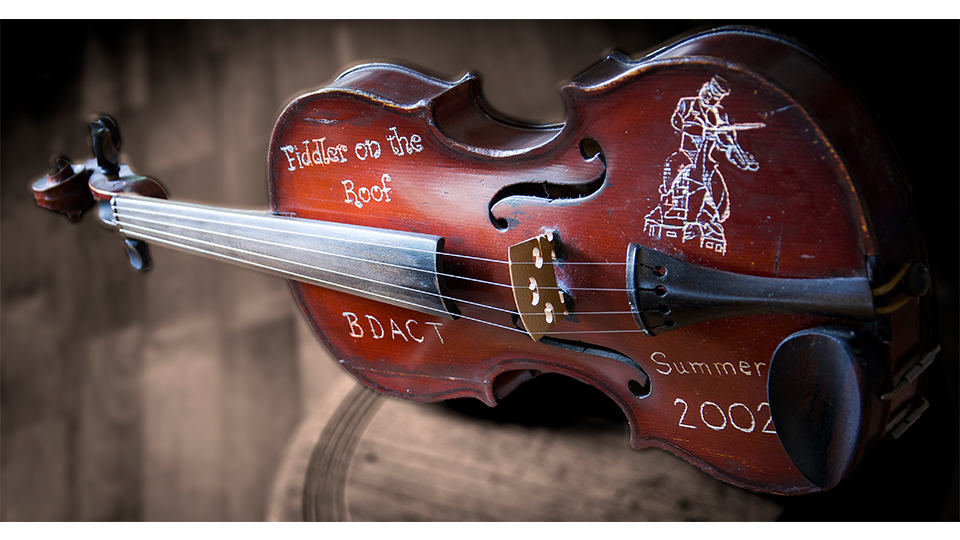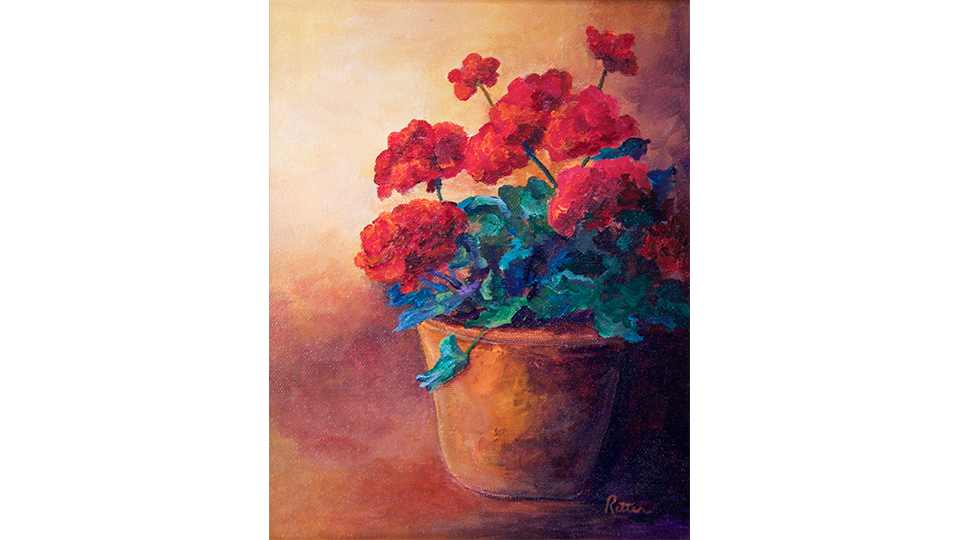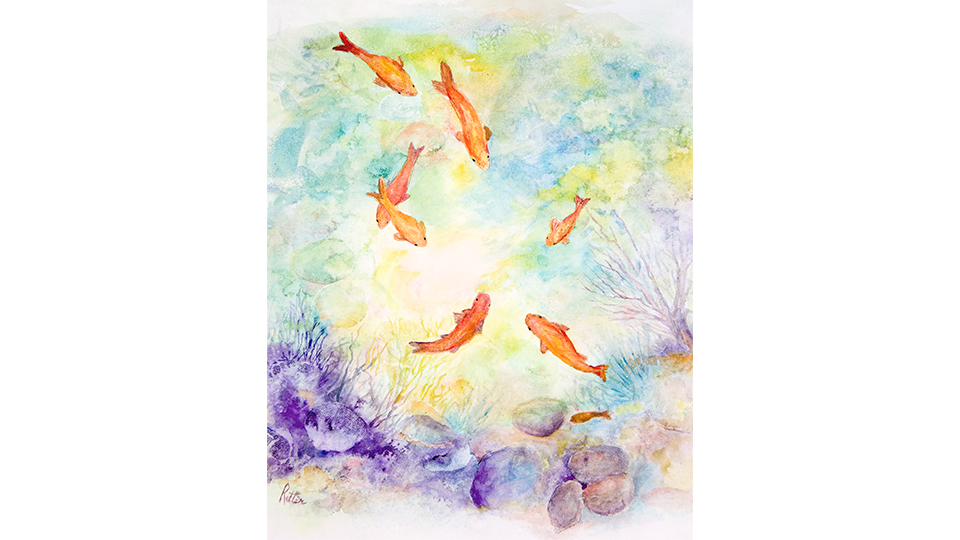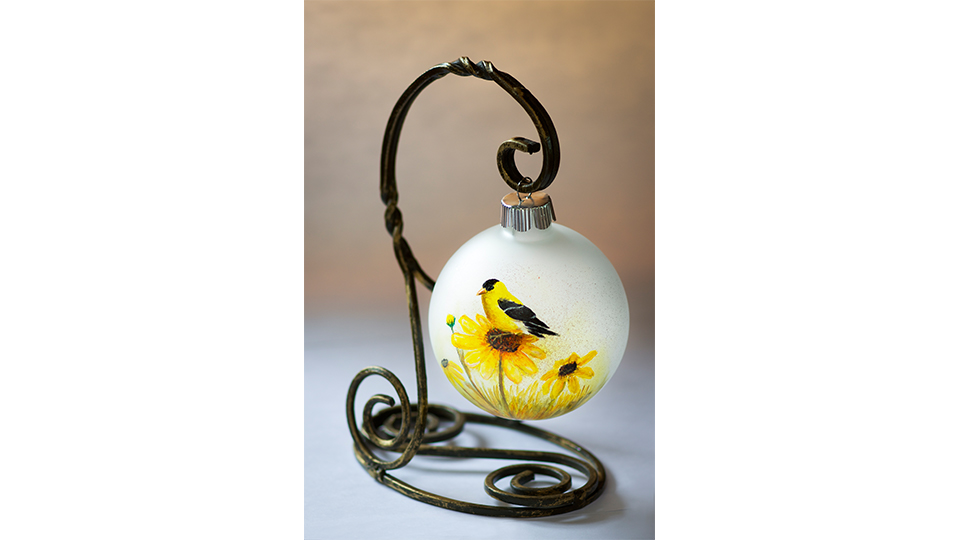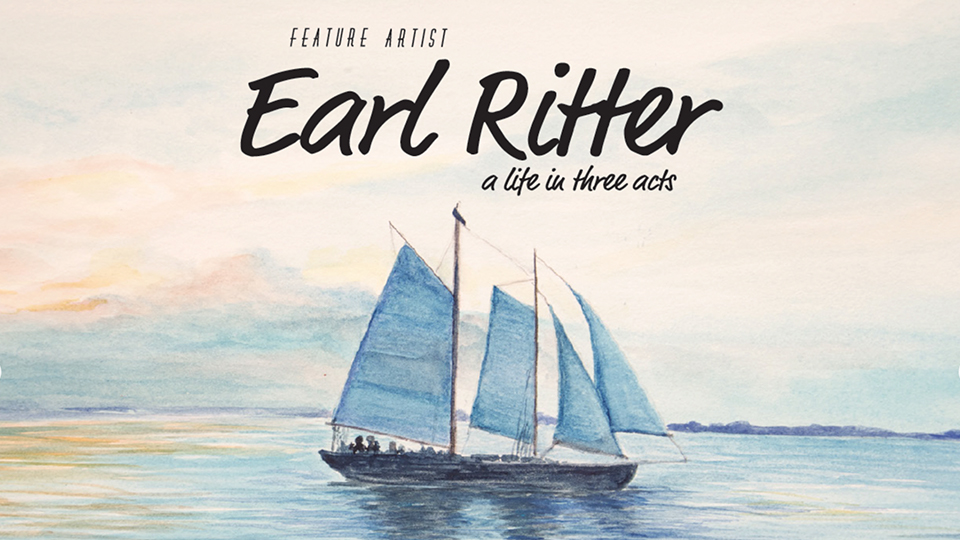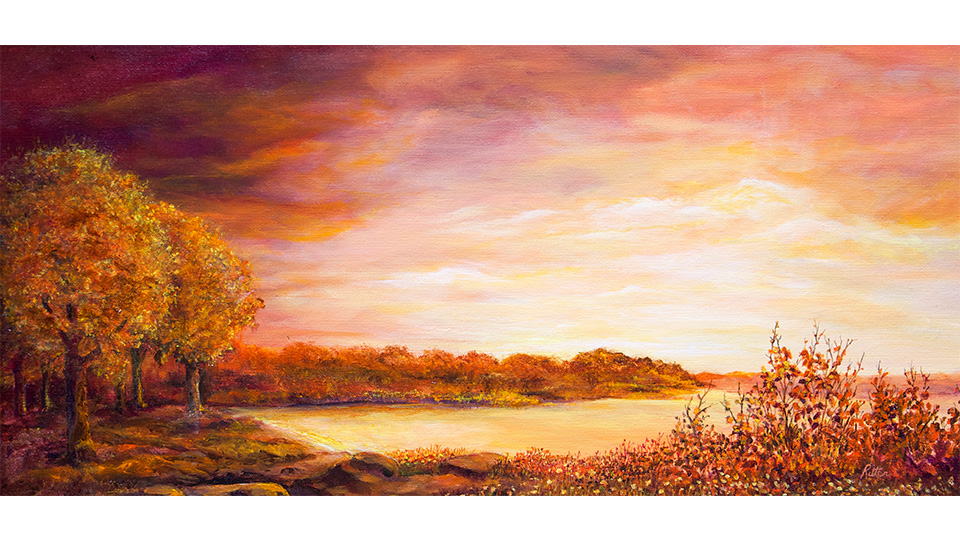
By: Karla Jensen
Publishers Note: This Artist Feature was originally published in our September/October 2015 print edition.
He’s got watercolor in his blood, theatre in his heart and the savvy of a shoe salesman. This is Earl Ritter, a celebrated educator, artist and theatrical director. At first glance, he is all button-down-formal and hospital corners. He is decisive, dot your I’s and cross your T’s. He is refined on the outside, but as conversational as your favorite neighbor on the in. For an outwardly quiet man, once you get him talking, you can learn a lot about his passion, compassion, expertise, and ability to single out a person and encourage him or her to discover one’s own intrinsic value. Ritter’s art sneaks up on you – quiet, soft and subtle like him, until he unveils those memorable autumn auburns, rustic rusts and deep end-of-the-ocean blues.
The premise for Ritter’s humble beginnings and subsequent success would make a great screenplay. Act I: A young talented artist and only child grapples with his course in life. Conflicted, he enters college but midway through drops out to consider his career path. He sells shoes in a department store until Uncle Sam taps on his shoulder. What is the allure of working in the shoe section of a department store to a guy who would ultimately become Horicon’s beloved art teacher and celebrated artist? Maybe it was the polished-to-perfection shine of new shoes and attractive window displays that would later transpose into a splendid nightfall on canvas or a stage dressed to kill. Perhaps the smell of fresh shoe leather compelled this artist to be equally attracted to the bouquet of paint, gesso and turpentine. Lessons from Earl Ritter’s early life would soon transform into creativity, patience and artistic expression that would last a lifetime.

Act II: This is a man who has sought out parts but he is not a mechanic (theatre casting), and who met Elvis, but not as a musician (fellow serviceman). When Ritter returns from the service, he completes his degree and is ultimately courted by a school in Horicon, Wisconsin. Our protagonist quickly evolves into a favorite educator, theatre director and set designer. He is all about developing character, building others up, and helping students of any age find a sense of pride in accomplishments.
Act III: There is more. Ritter adds celebrity artist and community theatre staple to his achievements. He donned his traveling shoes and toured art fairs every summer. This is a man who has gauged what kind of car to purchase by the size of its trunk. Like Geppetto, Pinocchio’s creator, Ritter has carved out a legacy in art, design and set construction but is anything but wooden. His work, from educational to artistic or theatrical, is alive and breathing and moving. Ritter’s life could be a play in three acts with no intermission. Earl Ritter has been one busy guy.
Act I: No screenplay or production would be any good without backstory. Earl and wife Anita both grew up in LaCrosse, Wisconsin. “I was an only child. None of my family had ever attended college. I took my first art class as a freshman in high school, followed with private art lessons at what now is Viterbo College during my junior and senior years.
“The job of selling shoes taught me to be patient, honest, to listen and work to win the respect and confidence of others. The same characteristics I carried over into my classroom. I didn’t realize until now that my early life was always preparing me for a teaching career,” said Ritter. In the service from 1956-‘58, he excelled at his position of photo interpreter, examining reconnaissance images. These tasks surely prepared his eagle eyes for attention to minute artistic detail. He returned to complete his college education and graduated in 1961. Ironically, Ritter forfeited his graduation ceremony for his wedding day in June of 1962.
Act II: Educator. Ritter first taught in Alma Center, Wisconsin, grades one through twelve, in two rural schools and three grade schools. He transported his art supplies in his car like a traveling salesman. “Students would come running to meet me and ask if I would be coming to their classrooms.” By 1964-’65, he served as the art teacher in Horicon for grades 1 through 12, and he also taught at Burnett Grade School. “Horicon had just built the high school so I finally had a real art room. Years later, I was fortunate to be able to design the art room when a new addition was added to the school.” If he could build a department and its home from the ground floor up, it is no surprise that he would excel in set design as well.
“At first, I started with 20 students in high school who chose art as an elective. The last year before I retired in1996, 151 students enrolled in art that school year. For the last 28 years I taught only in the high school. Some years, I’d have aids assist me. I would introduce a project, then float to another room.” Talk about multitasking. His job increased in layers, adding extracurricular activities like levels of a cake, each one enhancing his career to find that sweet spot educators love to reflect upon.
“I taught summer school, developed Tri-Arts, served as advisor for yearbook, forensics, director of the musical and prom,” said Earl. The best part about being so engaged in prom on a regular basis was that wife Anita never attended her own high school prom. For years, the couple made up for that and enjoyed prom together with their perpetual extended student family.

“Tri-Arts developed into three amazing days of arts, with choir, band and forensics performances and art exhibits. The school gave me the gym for the entire week.” This, Ritter says, was an amazing benefit to the kids and allowed families to see progress and talent. Students describe Ritter as patient and gentle, making them each feel special. Even today, former students gush over their beloved mentor in Mr. Ritter when they see him in public. According to former students, Mr. Ritter has been the kind of mentor you respect so much you never can really call him by his first name. He is proud of those protégés and has kept track of his credits like a film producer; an amazing amount of students have entered art careers. Thirty have gone on to careers in art. Eight have become art teachers and four are professional artists.
The crossover between art teacher and high school musical director was easy. Ritter’s choir director colleague asked if he would consider directing a show. Since he had been involved in plays and musicals during his own high school career, Earl felt at home doing so. In outside commitments, Ritter acted, directed and designed sets for the Marais Players in Mayville, then later became involved with the Beaver Dam Area Community Theatre (BDACT).
Act III: Artist. Ritter abides in pastels, watercolors and acrylics like he chooses cast members for a play: audition, observation, repetition, finale. The canvas is his stage and colors his characters. He is attracted to a family of hues like directors are drawn to rising stars, leading ladies and seasoned actors. He treats his art as a one-of-a-kind production and he brings each piece as close to perfection as possible. Thanks to wife Anita’s organization, his career is documented in scrapbooks, noting every show, every art project, and special recognition he has received. He has witnessed transformations in modern art, graphic arts and his own art.
“I had a couple of years under my belt teaching when I heard about the Beaver Dam Area Arts Association (BDAAA),” recalls Earl. Before too long, I served on the board. I showed in art exhibits and was instrumental in adding the word “Area” to be included in the name. “Whatever needed to be done in forming the arts association, I did it, creating by-laws and rules, to serving on the exhibit committee and Board of Directors, along with a willingness to teach and exhibit.”

Ritter began painting on canvas but found other unusual backdrops, one of which became his signature piece, painting birds on ornaments. “This idea came from Anita’s mother. I created annual ornaments for the Horicon Firemen’s spouses, other groups and individuals. I am thankful these ornaments are still in demand.
“When I retired, I vowed to have something to do. I wanted a reason to get up in the morning. I knew we’d enjoy grandchildren and family and I didn’t want to miss out, but I need other things as well,” confesses Earl. Anita believes he is happiest when he is busy working on a project and when family is close by. The Ritters enjoy time with daughter Cathy and husband Rich Loomans, and son Mark and wife Gina, and their children. The couple is very active in their church, Sacred Heart Parish.
For an artist as accomplished as Ritter, it is no wonder he has been commissioned for many local and regional projects. Ritter’s style demands one’s attention, like a great pair of shoes, and is evident especially in the murals created with high school summer students. These remain within the halls of Horicon High School, on the locker room walls at the Horicon Golf Course and in public places. “One of the most memorable projects involved summer school kids working on a mural at Clearview in the Alzheimer’s unit for six weeks,” recalls Earl.
If Horicon named an artist-in-residence, it would have been Ritter. “The Horicon Marsh had a big influence on me. Marsh scenes appeared on my pen and ink notecards and in my paintings. I chaired the first outside art show in Horicon, and in 1996, contributed to the Horicon Bank’s calendars with watercolors of all their branches. I also produced some of their Christmas cards. For Blue Heron Boat Tours, I’ve created pen and ink designs, produced a brochure, and painted murals on their walls and even in the restrooms.” The Chamber also purchased Ritter’s student artwork to frame as welcoming gifts for new businesses. He personally has additional work in the Neosho Museum and private homes.
What inspires Earl? “My love for being creative is an outlet that keeps me going. When I turned 68, I was in Florida and suffered a stroke. At the time, I had committed to contribute a chair for the fundraising auction at BDAAA. I had to get that chair with the theme of Van Gogh’s Starry Night done. In the fall of that year, I directed Fiddler on the Roof. In 2004, I had prostrate cancer. It happened to fall in the same year I agreed to direct the 40th anniversary show for BDACT. I chose to do the show anyway.”
With no curtain falling anytime soon on Ritter’s career, there’s more to come. The encore will have to wait. He is a participant at Black Waters Coffee in BDAAA’s Annual Driving Art Tour, October 10-11. “I’ve really enjoyed participating because many art lovers come around. The Driving Art tour produces excellent exposure for an artist. It’s been a great experience.” He continues to teach a watercolor and acrylic class in the spring and fall at the Fox Lake Community Center, which is sponsored by the Fox Lake Library, and he teaches at The Seippel Arts Center.
“I consider myself a teacher first and artist second. I truly taught at an ideal time to be a teacher,” said Earl, counting himself lucky for the years he put in. “It’s been a good life.” Like shoes themselves, Ritter is hard and soft, durable through many seasons of creativity and sensitive in his art and relationships. He has left a trail of big shoes to fill for those who follow.
